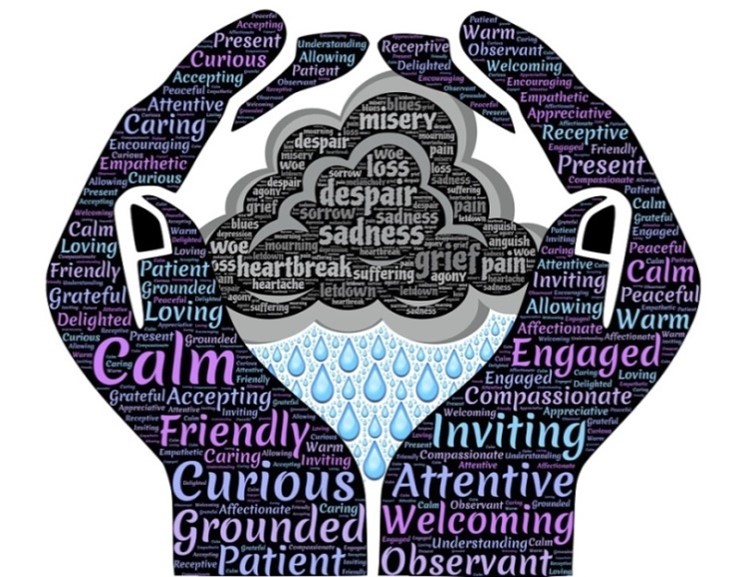
As cases of COVID-19 surge across America, so do issues that affect mental health. Cases of stress, anxiety, depression and even thoughts of suicide are increasing as coronavirus case numbers rise. Nearly half of Americans have reported a negative turn in their mental well-being since the start of the pandemic.
Google reported that searches related to anxiety relief hit over 12,000 monthly searches during the start of the pandemic, back in March and April.
Does your company have a strategy in place to support your employees during this time of crisis?
Mental Health Statistics
The statistics on depression and anxiety show a significant, negative impact on the economy. Depression alone is estimated to cost the U.S. economy more than $44 billion in lost productivity each year. This matters to your workplace.
A survey conducted this summer by the U.S. Centers for Disease Control and Prevention showed that three times as many Americans are suffering from anxiety compared to the same time last year. The number of Americans experiencing depression has quadrupled in the same time frame. Depression is the leading cause of workplace disability worldwide and now your employees have to face the additional strain caused by fear of COVID-19 on their mental health.
COVID-19 and Mental Health
The coronavirus pandemic has deeply affected those with preexisting mental health conditions but it has also created mental health conditions in people who have never experienced them before.
Fears of unemployment, personal financial hardship, health concerns and apprehension for family and friends have affected everyone this year. The trauma from the coronavirus has affected every single American in some way. Many employees have been isolated at home for extended periods of time during lockdowns and restrictions.
All of this leads to unresolved trauma, feelings of helplessness and cognitive decline. Extended periods of stress can lead to an inability to focus, depleted brain function, increased digestive issues and feelings of overall anxiety.
Expecting a return to “business as usual” is not realistic, nor is it healthy for your employees. It is important to address the needs and concerns of your workforce and do what is in your power to support them through this difficult time. While the majority of American companies implement some form of Wellness Program, the pandemic has forced all businesses to re-evaluate their wellness-related priorities this year. Mental Health needs to be at the forefront of all business plans.
Mental Health Issues in the Workplace
For every dollar you invest into workplace good practices pertaining to mental health, the World Health Organization estimates a return of four dollars in improved productivity. That is worth noting.
Health experts agree that working is good for your mental health. Focusing on work gives employees a sense of purpose, belonging, and can be a positive distraction from current crises like the pandemic.
The majority of every day mental health risk factors in the workplace relate to poor managerial practices, lacking support and a deficiency of resources for employees. Furthermore, employees now have the additional stress of COVID-19 and its impact on the economy to worry about. Many employees who have chosen to stay home during the pandemic, to protect or to care for their loved ones, have reported forms of bullying from those who feel they had to continue to work at the office.
What you can do in your Workplace
- Implement and enforce mental health best practices. These must include prevention, early identification and support.
- Ensure all employees are aware of the support that is available, through EAP programs and HR, particularly confidential support. Create a company toolkit with resource links, benefit info, wellness reminders like utilizing massage therapy benefits and fitness memberships, etc.
- Take time to speak to employees who have been away from the office for an extended period of time throughout the pandemic. Long-term work absences often have a harmful impact on mental health.
- Talk to your management staff and encourage them to provide a sense of control, participation and decision making for all members of their team.
- Create pathways for measured career goals and advancement where possible.
- Recognize and reward all employees for their contributions and successes.
- Support a healthy balance of work and home. Consider work from home options, job re-design, half-days or additional vacation time for employees who need it.
- Include mental health in your company’s Workplace Wellness Program. Talking about the stigma that surrounds mental health can make all the difference. Conduct “Lunch and Learn” style sessions, virtually if needed, and include things such as meditation time, tips to get outdoors, how to naturally reduce anxiety and eating the right foods to combat mental health conditions.
- Alter your company’s wellness subsidies to include home gym equipment, bicycles, running shoes, FitBits, etc. Health clubs and gyms continue to shut down due to the pandemic and staying fit is more important than ever, for both physical and mental well-being.
- Don’t forget those employees who continue to work from home. Check in with them regularly and ensure they are “switching off” at the end of the day, not burning out. Remember these employees are likely juggling multiple roles throughout the work day.
- Make your workplace a safe space for everyone. Encourage conversations at the Management level and ensure those conversations filter throughout the workplace, creating a culture of trust and support. Host meetings to discuss mental health specifically. Make recognition and support a priority for your company. Inclusivity matters now more than ever.

Leave a Reply